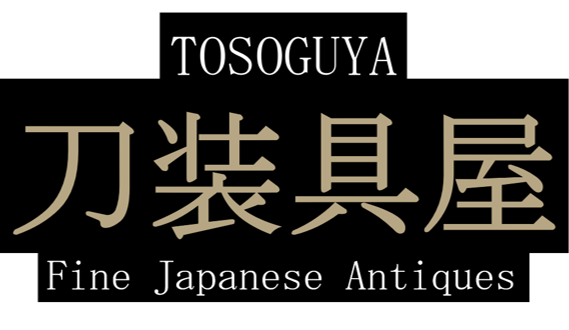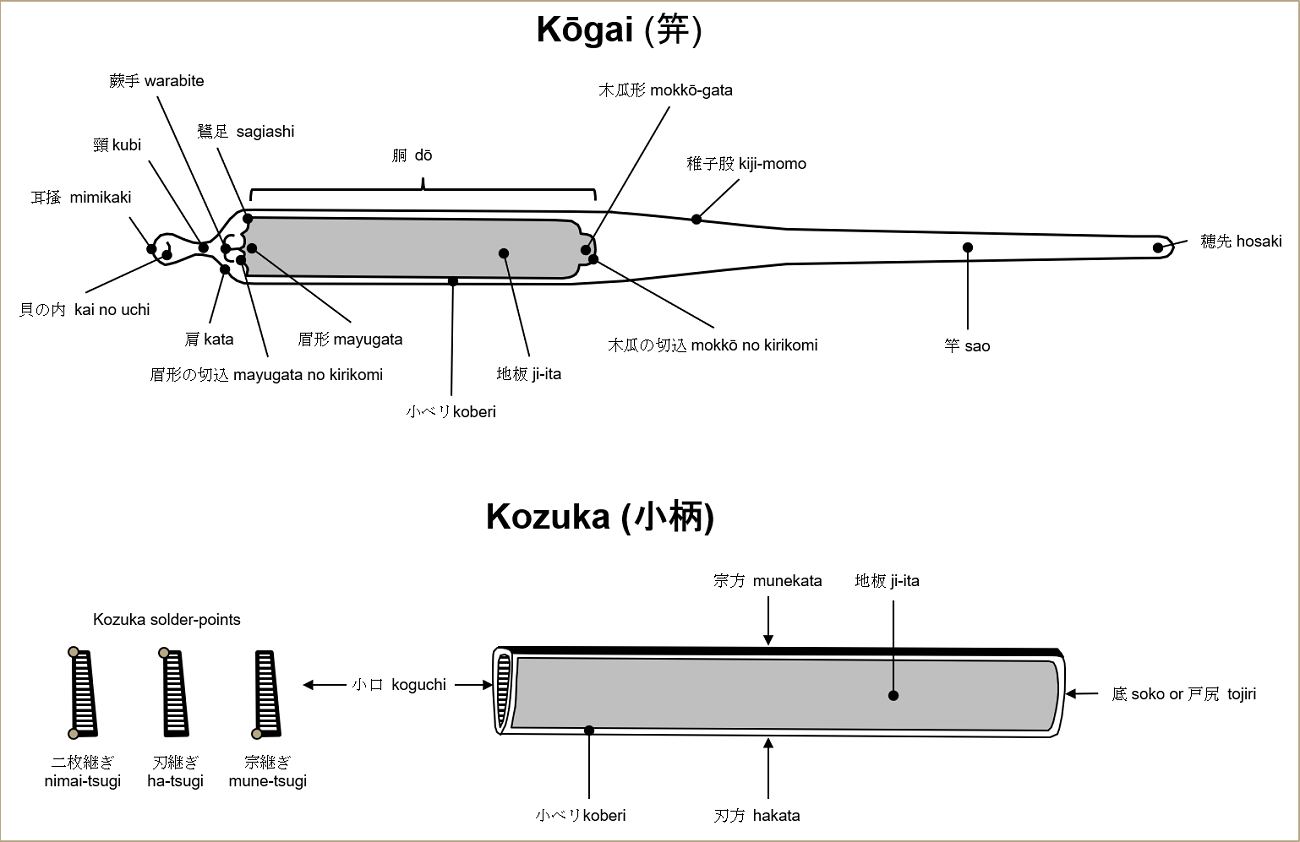


Dō (胴) - The trunk of the kōgai
Hakata (刃方) - Towards the cutting edge of the kozuka
Hosaki (穂先) - The tip
Ji-ita (地板) - The central plate, on which the motif is added
Kijimono (雉子股) - Literally 'pheasant thigh', it is the sloping area between the sao and dō of the kōgai
Kōgai (笄) - A personal grooming implement sometimes carried as part of the katana koshirae, in a pocket in the saya
Koguchi (小口) - Literally 'small mouth', it is the opening of the kozuka, or its fitting
Kozuka (小柄) - The decorative handle fitting of the Kogatana; a small utility knife that was sometimes carried as part of the katana koshirae, in a pocket in the saya
Kai no uchi (貝の内 ) - Scoop surface / lip
Kata (肩) - The shoulder
Kubi (頚) - The neck
Mimikaki (耳掻) - Literally 'ear scratcher'
Mayugata (眉形) - Literally 'cocoon-shaped', refers to the shape of the top curve of the plate
Mayugata no kirikomi (眉形の切込) - Refers to the notches in the Mayugata
Mokkō-gata (木瓜形) - Refers to the shape of the entrant, 'Mokkō-shaped', or Mokkō no kirikomi (木瓜の切込) meaning 'notched-in' mokkō
Kubi (頚) - The neck
Munekata (棟方) - Towards the back edge of the kozuka
Sagiashi (鷺足) - Literally 'heron's foot', refers to the shape of the mayugata no kirikomi, usually denoting deeply incised versions
Sao (棹) - Another term for neck / beam etc.
Soko (底) or Tojiri (戸尻) - Butt-end of the kozuka
-Tsugi - Soldering points used on kozuka kogai. Ha-tsugi (刃継ぎ) joint is along the cutting-edge; Mune-tsugi (棟継ぎ) joint is along the back-edge; Nimai-tsugi (二枚継ぎ) is a double joint either along the back edge, or opposing edges
Warabite (蕨手) - A 'fern-shaped' carved motif at the base of the neck of the kōgai
Wari-kōgai (割笄) - Type of kogai which is split down the middle from mimikake to hosaki, to form chopsticks. Edo period